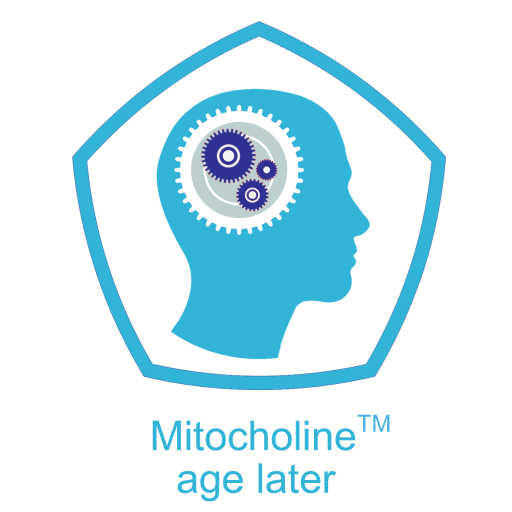What is Mitocholine:
In 2007 the mechanism of mitochondrial control of insulin receptor activation in the brain has been discovered. It was demonstrated that mitochondrial substrate – succinate facilitates neuronal insulin receptor activation. Succinate promotes insulin function in the brain.
Storozhevykh TP, Senilova YE, Persiyantseva NA, Pinelis VG, Pomytkin IA. Mitochondrial respiratory chain is involved in insulin-stimulated hydrogen peroxide production and plays an integral role in insulin receptor autophosphorylation in neurons. BMC Neurosci. 2007 Oct 8;8:84.
Pomytkin IA. H2O2 Signalling Pathway: A Possible Bridge between Insulin Receptor and Mitochondria. Curr Neuropharmacol. 2012 Dec;10(4):311-20.
Persiyantseva NA, Storozhevykh TP, Senilova YE, Gorbacheva LR, Pinelis VG, Pomytkin IA. Mitochondrial H2O2 as an enable signal for triggering autophosphorylation of insulin receptor in neurons. J Mol Signal. 2013 Oct 5;8(1):11.
A novel molecule Dicholine Succinate (DISU), a bioavailable succinate salt, was found to be the best succinate in generating the mitochondrial signal for the activation of brain isoform A (IR-A) insulin receptors.
Storozhevykh TP, Senilova YE, Persiyantseva NA, Pinelis VG, Pomytkin IA. Mitochondrial respiratory chain is involved in insulin-stimulated hydrogen peroxide production and plays an integral role in insulin receptor autophosphorylation in neurons. BMC Neurosci. 2007 Oct 8;8:84.
Storozheva ZI, Proshin AT, Sherstnev VV, Storozhevykh TP, Senilova YE, Persiyantseva NA, Pinelis VG, Semenova NA, Zakharova EI, Pomytkin IA. Dicholine salt of succinic acid, a neuronal insulin sensitizer, ameliorates cognitive deficits in rodent models of normal aging, chronic cerebral hypoperfusion, and beta-amyloid peptide-(25-35)-induced amnesia. BMC Pharmacol. 2008 Jan 23;8:1
DISU was first designed by Russian chemist Dr Igor Pomytkin. DISU is composed by two metabolites, choline and succinate. It is the only known specific molecule affecting the activation of neuronal isoform IR-A of insulin receptor. DISU potentiates intracerebral insulin functions. These functions include effects on concentration, memory and mood and are mediated by activation of neuronal isoform IR-A of the insulin receptor.
Pomytkin IA, Semenova NA. Study of the effect of preconditioning with succinic acid salt of choline (1:2) on the disturbances of energy metabolism in the brain during ischemia by 31P NMR in vivo. Dokl Biochem Biophys 2005, 403:289-92.
Storozheva ZI, Proshin AT, Sherstnev VV, Storozhevykh TP, Senilova YE, Persiyantseva NA, Pinelis VG, Semenova NA, Zakharova EI, Pomytkin IA. Dicholine salt of succinic acid, a neuronal insulin sensitizer, ameliorates cognitive deficits in rodent models of normal aging, chronic cerebral hypoperfusion, and beta-amyloid peptide-(25-35)-induced amnesia. BMC Pharmacol. 2008 Jan 23;8:1.
Cline BH, Steinbusch HW, Malin D, Revishchin AV, Pavlova GV, Cespuglio R, Strekalova T. The neuronal insulin sensitizer dicholine succinate reduces stress-induced depressive traits and memory deficit: possible role of insulin-like growth factor 2. BMC Neurosci. 2012 Sep 18;13:110.
Costa-Nunes JP, Cline BH, Araújo-Correia M, Valença A, Markova N, Dolgov O, Kubatiev A, Yeritsyan N, Steinbusch HWM, Strekalova T. Animal models of depression and drug delivery with food as an effective dosing method: evidences from studies with Celecoxib and Dicholine Succinate. Biomed Res Int. 2015; 2015:596126.
Cline BH, Costa-Nunes JP, Cespuglio R, Markova N, Santos AI, Bukhman YV, Kubatiev A, Steinbusch HW, Lesch KP, Strekalova T. Dicholine succinate, the neuronal insulin sensitizer, normalizes behavior, REM sleep, hippocampal pGSK3 beta and mRNAs of NMDA receptor subunits in mouse models of depression. Front Behav Neurosci. 2015 Feb 26;9:37.
Strekalova T, Costa-Nunes J, Veniaminova E, Kubatiev A, Lesch K-P, Chekhonin VP, Evans MC, Steinbusch HMW. Insulin receptor sensitizer, choline salt of succinic acid, prevents both TLR4 upregulation and affective changes induced by a high-cholesterol diet in mice. J Affect Disord. 2016 May 15;196:109-16.
Combination of two mitochondrial substrates - Dicholine Succinate (DISU) and Nicotinamide was termed Mitocholine.
The synergistic effect of Mitocholine on the generation of the intracellular ATP production in the brain has been discovered and patent is pending.
Mitocholine is specific combination of mitochondrial substrates acting in synergy to reinforce and maintain energy production in the brain.
The decrease of ATP production is well characterised in ageing brain. Our belief is that surge and maintenance of energy levels with Mitocholine will result in revitalisation and hindering of the signs and processes of ageing in the brain.

MitocholineTM - maintaining brain health through nutrition
